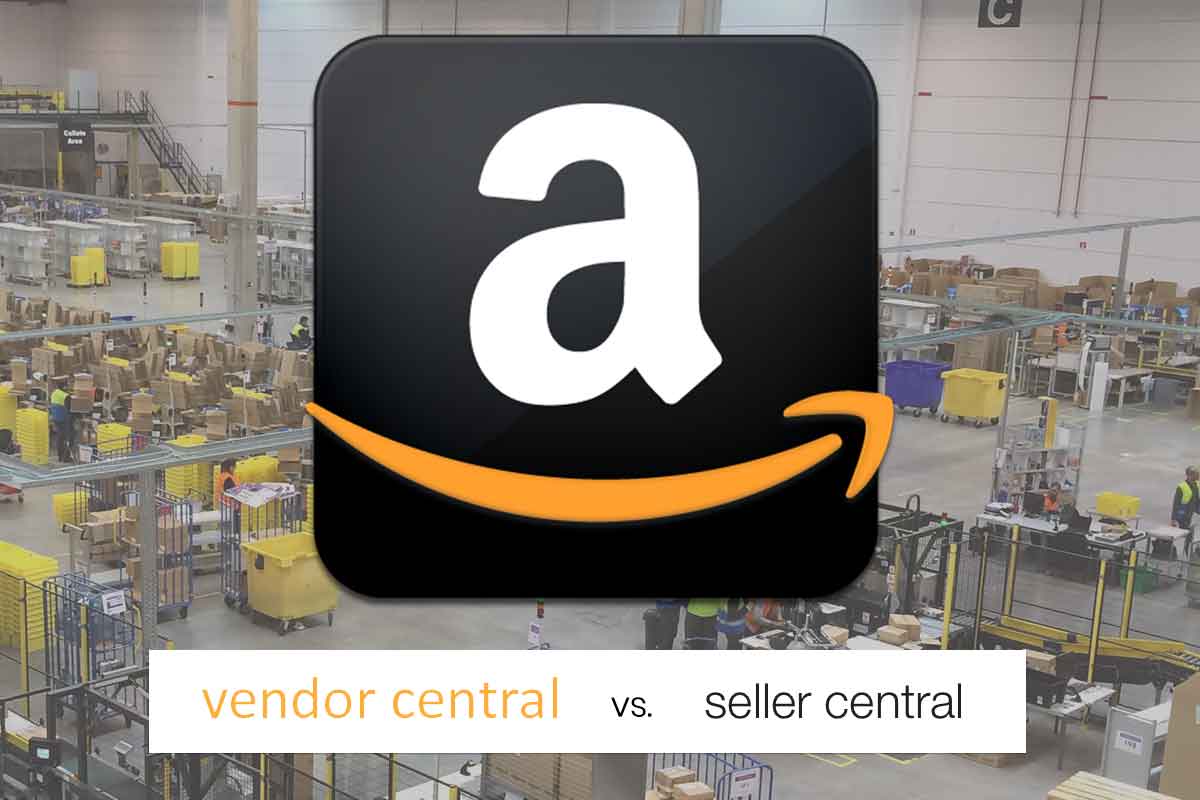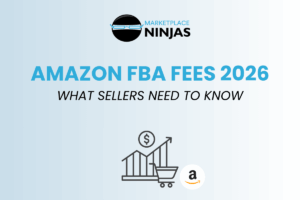Which “Central” Is Better?
Amazon Vendor Central versus Seller Central
The fundamental difference between Vendor Central and Seller Central is who will be selling your products. With Seller Central, you are selling directly to Amazon’s customers. With Vendor Central, Amazon’s retail team buys and resells your products to their customers. There are significant differences between the two, so it’s important to fully understand the potential opportunities and drawbacks with each.
Before diving into the details, let’s define Amazon Seller Central and Amazon Vendor Central and give an overview of what each has to offer.
What Is Vendor Central?
Amazon Vendor Central is the web interface used by manufacturers and distributors. If you sell via Vendor Central, you’re called a first-party seller. You’re acting as a supplier, selling in bulk to Amazon. Registration on Vendor Central is by invitation only. As a vendor you are able to ship bulk orders to Amazon’s fulfillment centers and individual orders directly to Amazon’s customers. The latter is referred to as “Direct Fulfillment”.
A tell-tale sign that a company is selling through Vendor Central is the phrase “ships from and sold by Amazon.com.”
What Is Seller Central?
Amazon Seller Central is the web interface used by brands and merchants to market and sells their products directly to Amazon’s customers. If you have a Seller Central account, you’re considered a marketplace or third-party seller.
As a marketplace seller, you have three options for fulfilling orders you receive from Amazon’s customers. You can handle the shipping, customer service, and returns for each individual order yourself you can allow Amazon to handle this for you by enrolling your products in the Fulfilled by Amazon or “FBA” program and lastly you can enroll in Amazon’s “seller fulfilled prime” program which allows you to offer free two day shipping on orders shipped from your warehouse.
The Short List
Here’s a side-by-side comparison of the differences between having a Vendor Central and a Seller Central account:

- By invitation only
- Sell to Amazon
- Rigid logistical requirements
- Up to 90 Day payment Terms
- Amazon controls retail pricing
- Traditional sales process
- Off-Amazon advertising options

- Anyone can sell
- Sell to Amazon’s customers
- Flexible logistical options
- 14 Day payment terms
- Brand controls retail pricing
- Complex sales process
- Advertising limited to Amazon website
Amazon Vendor Central Pros
Consumer Confidence
Having your products sold as a first-party seller through Vendor Central means that, as far as shoppers are concerned, your product is being “sold by Amazon.” That seal of approval can provide a boost in consumer confidence that you don’t have as a third-party merchant.
Simplified Business Model
The process of “doing business” with Amazon is simpler through Vendor Central than through Seller Central. As a vendor, your primary focus is on filling purchase orders, billing, and avoiding chargebacks. As a seller, especially utilizing FBA, you will be responsible for sales reconciliation, lost inventory, and taxation liabilities.
Amazon Vendor Central Cons
Retail Repricing Algorithm
Vendors are able to provide a suggested retail price but Amazon utilizes an automatic repricing software to set the retail price. This means Amazon does not follow Minimum Advertised Pricing (MAP) rules. This can also lead to the discontinuation of purchase orders for individual products not meeting internal profitability numbers due to outside factors driving down the retail price. Once an item is deemed unprofitable, it is extremely difficult to get Amazon to begin ordering it again.
Logistical Requirements
Amazon requires vendors to follow specific rules for multiple logistical aspects including shipment creation speed, item prep requirements, and product back order rates among many others. Failure to adhere to these rules can cause significant charge back fees.
Amazon Seller Central Pros
Analytics
Seller Central provides you with significant amounts of consumer data at no charge. As a seller, you have access to Amazon customer data that can be used for a multiple of purposes. While it is strictly prohibited to remarket to Amazon’s customers, that data can be used to better understand who is buying which products and where.
Pricing Control
As the seller you have the ability to control retail pricing, so you are able to maintain established retail pricing for other channel partners. Also, you are able to automatically match your competitor’s pricing to stay competitive.
Amazon Seller Central Cons
Fulfillment Costs
Often times the shipping and/or fulfillment costs limit your ability to sell low-priced items on Amazon. At the time of this article being written, the minimum fulfillment charge for non-media FBA items is $2.41, not including Amazon’s commission or product storage fees.
Limited Control
Without going into too great of detail, Amazon limits how much control a seller has over the content being displayed on their product detail pages vs. Vendor Central. Also, it can be more difficult to deal with rogue 3rd party sellers and/or address issues with counterfeit products.
Hybrid Model?
It is becoming more and more common for brands to incorporate a hybrid model to fully benefit from each option. Tools available to savvy brands not traditionally used:

Messaging Control
Some Brands add alternate, discontinued, or bundle ASINs to their Seller Central account to control the content and messaging of those products as they are not being sold via Vendor Central.

Improve Profitability
Certain products, depending upon their price and size, can be much more profitable sold through Seller Central.

Closeouts
As Amazon Vendor Central typically bases purchase orders on historical demand, certain product may be able to be sold much faster via Seller Central.

Product Launch
As stated above, Amazon’s PO system has limitations. Sending inventory over to FBA can greatly increase the volume and frequency of purchase orders for newly launched products.
Why It Matters
It may be hard to fathom, but over 50% of all online shoppers now use Amazon as the first website they visit when making buying decisions. If brands haven’t created a strategy to reach these shoppers, they’re missing out on a major piece of the ecommerce market. In many ways, Amazon is more important than Google. It’s critical to have a strategy tailored to your needs that takes full advantage of the opportunities offered by Amazon.





